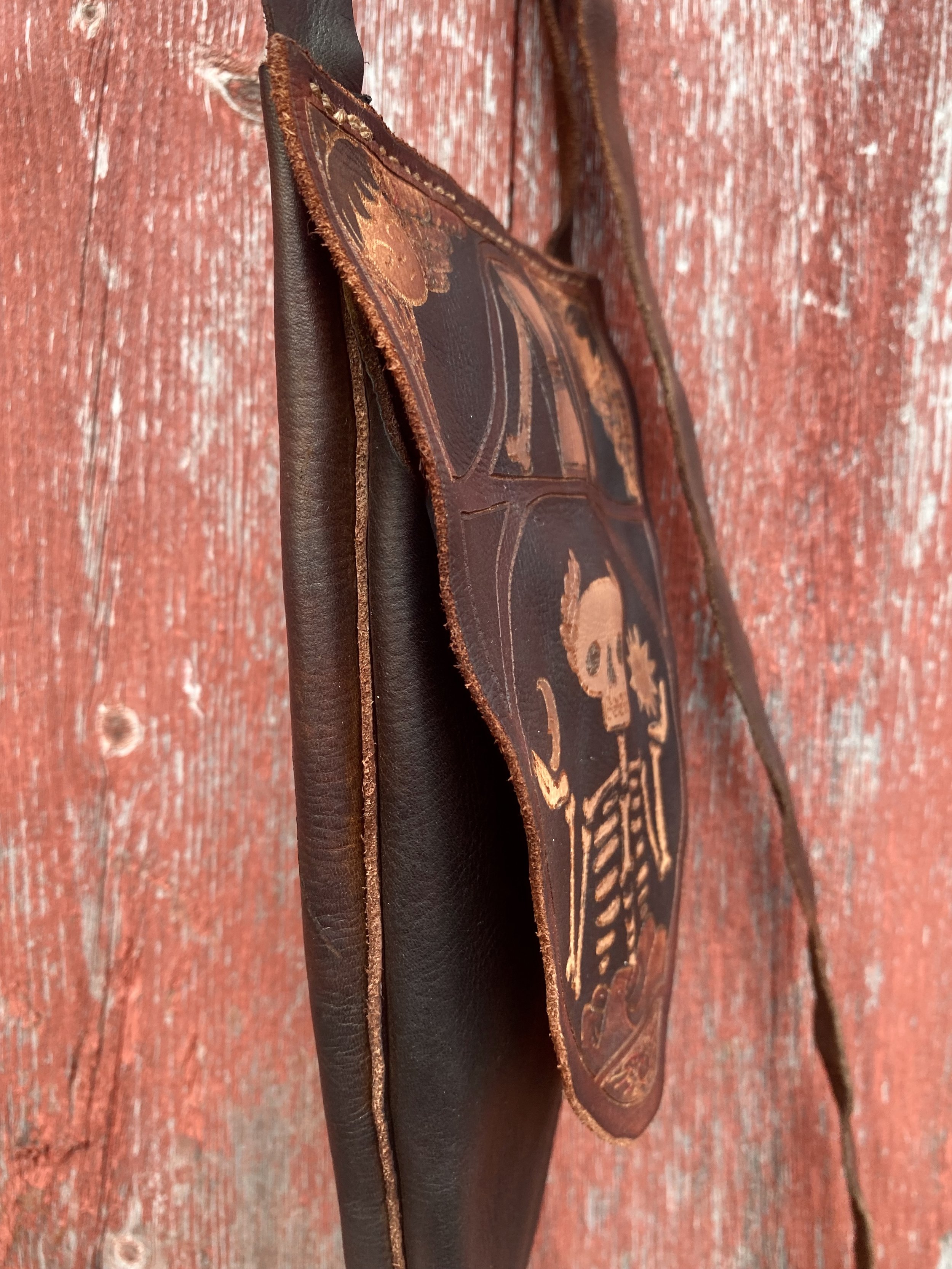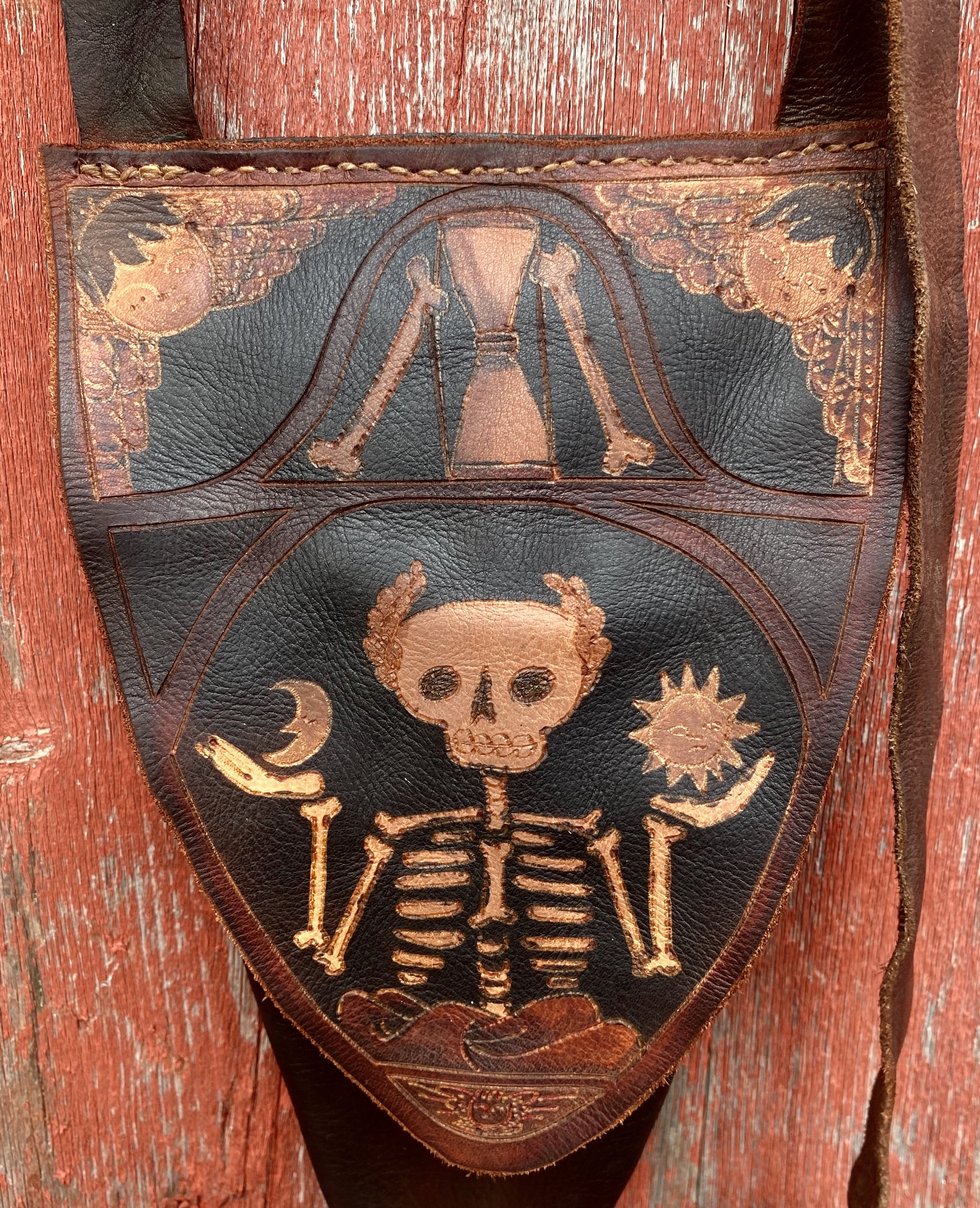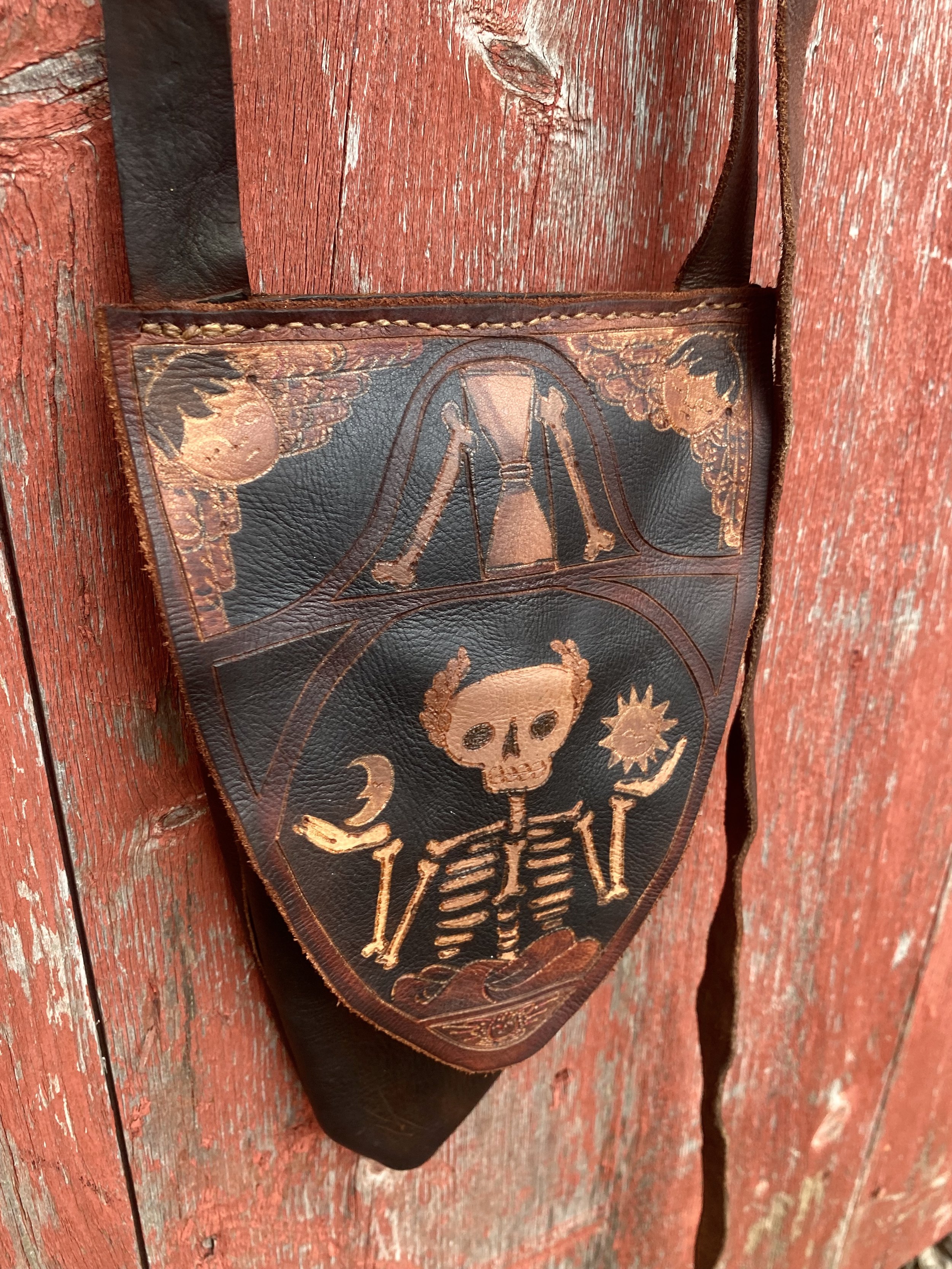The Death Bag - A Retrospective
This last year I’ve spent a lot of time studying original and contemporary Colonial American artwork. As an artist, I feel that I go through cycles of consumption and creation. I used to think I had control of that cycle, but I don’t think that way anymore. Now I feel that this cycle is dependent on finding fresh information to digest and utilize.
After a years long creative draught, I began to feel differently as autumn passed. As if the changing of the leaves was a lightswitch, my brain turned back on and my sketchbook felt like a gift instead of a curse. Ideas flowed through my pen, pulling guidance from original and contemporary pieces I had seen over the past 11 months. I felt an odd peace in reaching back in time to artists long dead and connecting their work with the work of myself and my friends. Perhaps someday someone will look at my writing in a similar manner.
In February I published the first drawing of my “Memento Mori” longhunter, a design combining American Colonial reminders of death with the attire of a hunter from the late 18th century. This design was inspired by the work of Eric Ewing, who at the time had included it on a series of flint wallets he made earlier in the year. I drew a few of these long hunters but ultimately had to lay him to rest as I fell into old habits of attempting to produce for the sake of production.
Falling back to the cyclical nature of artistic creation, I dropped back to research. Studying more and more about early American art and how it portrayed, or we think it portrayed the culture of our forefathers. This research lead me to the concept of death, loss and morning and how it was portrayed in an era of much more hardship than any of us today could endure. One of the more permanent artforms we have left from colonial America is the gravestone. They have worn over time, but still give us wonderful insight into the lives of their owners, and the art of the era. I didn’t know it at the time, but this would become an eery primer for the year ahead.
It has been a long, hard year. The loss of my unborn son, a family pet, and countless hours of thought about the state of the world has drained me of much more happiness than I care to admit. As I look back on the year I find comfort in the phrase repeated over all of the books, drawing, and gravestones I’ve studied.
“Memento Mori, ‘remember that you die”
It may sound or feel morbid, but this hasn’t always been a reminder of the end. Some of the earliest gravestones in the Eastern US remind us that this life is not eternal, that there is peace after we die. This idea is reflected in the stones, angels and cherubs float in the stones, with flowing robes and trumpets announcing the entrance of another soul into a world of no pain, no suffering. Fruit trees are in abundance, representing the tree of life, the garden of eden, and the cyclical nature of life and death.
It wasn’t until later, from my observations in the mid to late 1700s, when we saw some of the more contemporary portrayals of death, the morbid and perhaps scary ideas we see today. Trees and angels become smaller, giving way to bones and hourglasses. We see bats held back by angels, weeping flowers, and most prominently, the winged skulls that have inspired me here in 2021.
I find an odd peace in the artwork on these stones. The people beneath these stones were loved by someone, they lost loved ones themselves. When I stumbled onto stones made for children it hurt.
Perhaps this is just the rambling of a young man coming to terms with his mortality, maybe I’m assigning too much importance and connection to some 200-year-old carvings. I don’t really know, but for me at this time, there’s something important about these connections and the constant they represent- Memento Mori
The first piece completed from this “sprint” was my first “death bag”, kindly named by master artistan Shane Emig of Cabin Creek Muzzleloading. The artwork on the bag was original inspired by this stone made to commemorate Susanna Jayne, of Marblehead MA who passed away in 1776.
This is an information packed stone, this image only represents the top motifs, the name and dates are held underneath this composition in the stone. The top portrays an hourglass, time is paramount, it’s walled off, away from any tampering or control by the viewer. The glass is propped up by bones, perhaps a reminder of who came before as well as time’s persistence.
As we look at the corners you’ll notice Cherubs at the top, and bats at the bottom. Several have noted this to be a representation of angels over devils, good winning vs evil, or maybe a reminder of hope in hard times. In the center, our composition is framed with a large snake. This snake, I feel, is representative of the Greek “Oroboros”, a snake eating it’s own tail as a sign of the enteral cycle of life. In the center we have a figure I feel must be death himself. He has the classic scythe propped up against his boney chest, resting on his robes at the bottom of his rib cage.
In each hand you’ll see two icons, one a sun, the other a bit lost to time. Many have interpreted this differently, there are several images of this stone that provide insight, but not much in the way of solid identification in my mind. Some say it is a tree, a moon, or even an apple to bring us back to the story of Adam and Eve. In my bag, I decided it would be a moon, connecting the sun as life and the moon as death or the afterlife. What I wouldn’t give to talk to the original artist.
I didn’t want to directly copy the stone, and instead tried to use it as inspiration for my own design, changing some elements and swapping them for designs from other stones and my own sketchbook. I tuned the composition to match my canvas, a 5x7” vegetable tanned leather flap, and came up with what you see today.
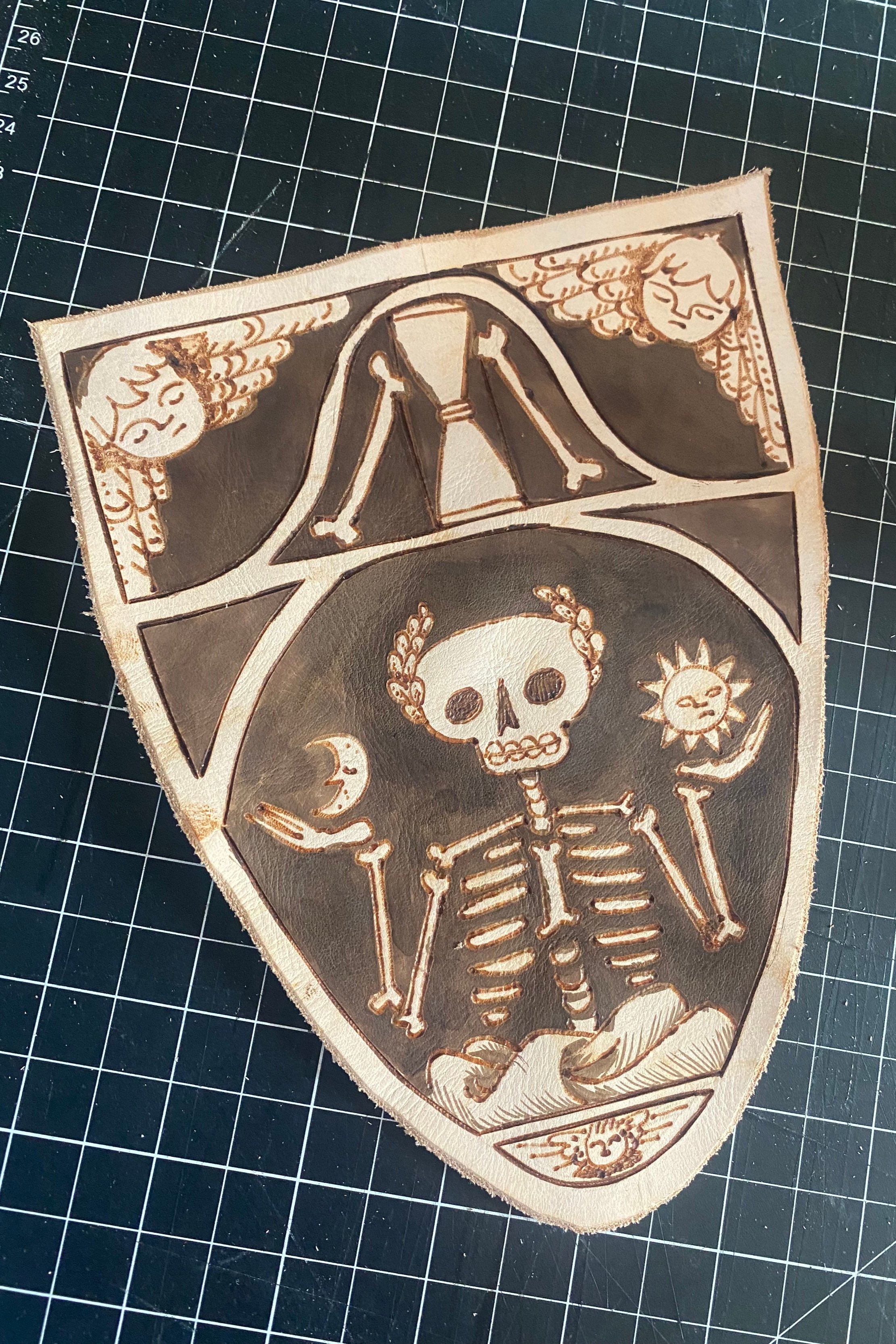
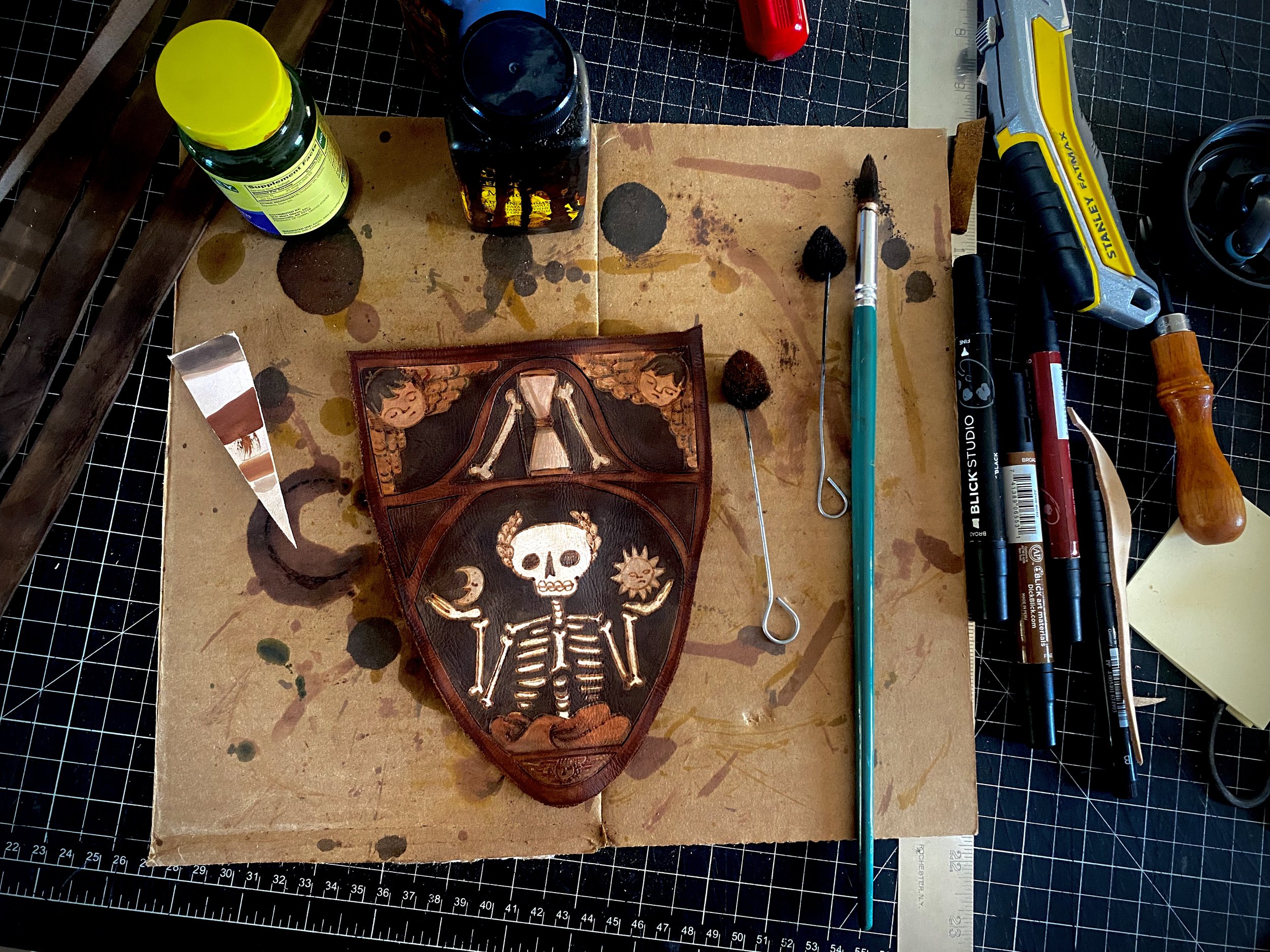
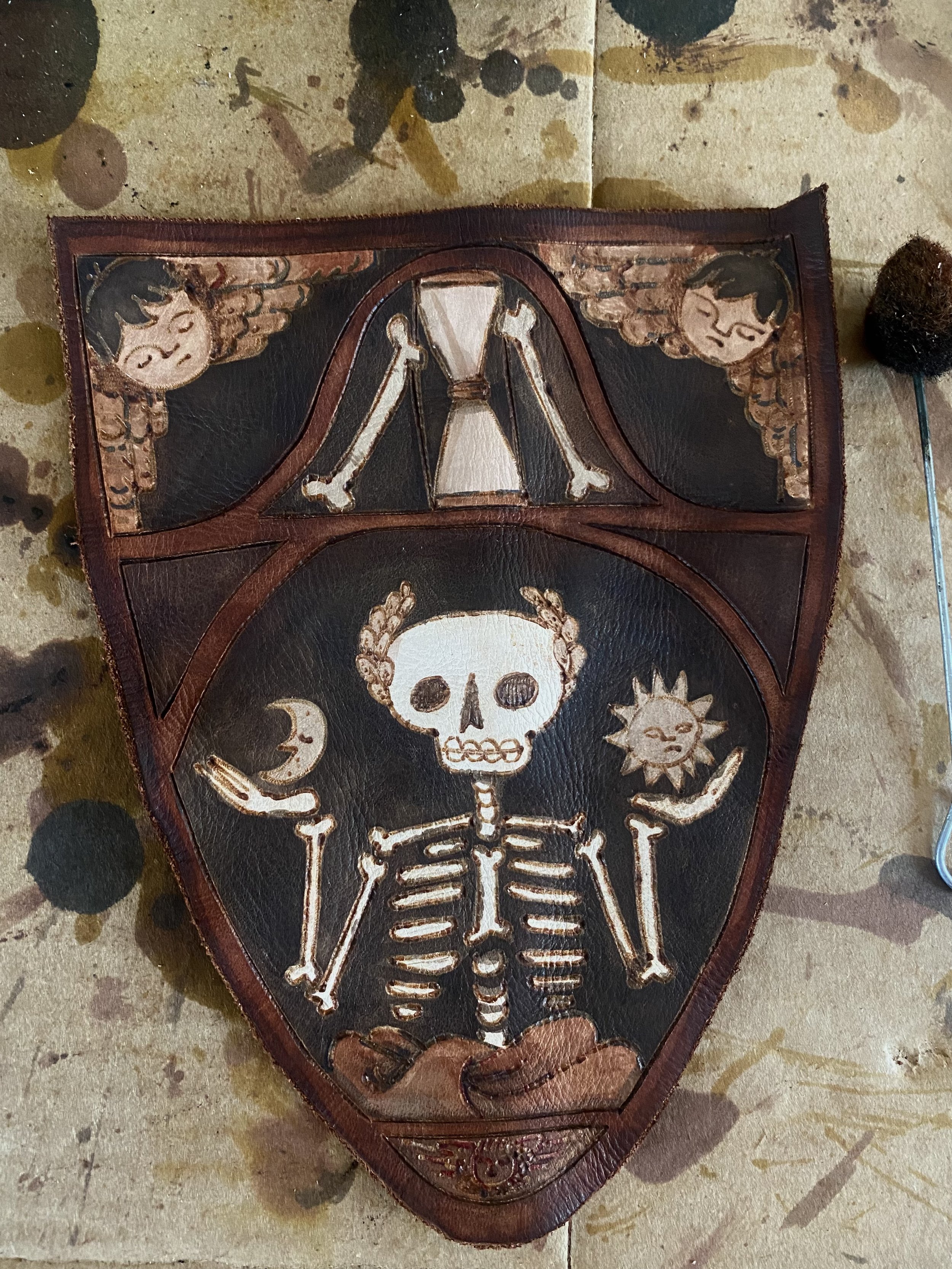
I’ve always loved drawing, so I borrowed a technique used by my friend Jeff Luke to apply my drawings to the leather canvas. I sketched the design onto the bag using a black colored pencil. The wax adheres nicely to the hide and doesn’t smear as you are working. From there I used a fine-tipped wood burner to burn my drawing into the hide, careful to not burn all the way through. While I consider this flap a canvas, I want the whole piece to be functional as well.
With the burning complete, I began to experiment with color. Using alcohol-based leather dye and a paintbrush, I began to paint in the same way I would with my watercolors - slow delicate layers of color applied to give depth and texture to the hide. I have received a lot of questions about this method, but there is truly nothing special. I mix the dye in various ratios of dye: alcohol to achieve lighter tones, and apply many layers to give the leather depth and age.
The rest of the bag is inspired by Appalachian bags seen in the late 18th and early 19th centuries, but exaggerated in length. It has a single inner pocket, and is sewn together with a welt for duability. It has a strap that is 3/4” wide with an iron buckle.
I’m sure when the time comes I won’t be ready to leave, but I’d be lying if I said I wasn’t ready to see my little angel.
If you enjoy this kind of work and want to see work from those who inspire me, I encourage you to check out the work of Eric Ewing, Ian Pratt, Jeff Luke and Ken Scott. Each of whom are creating contemporary artwork inspired by the work of our ancestors to tell new stories and continue a wonderful tradition.


